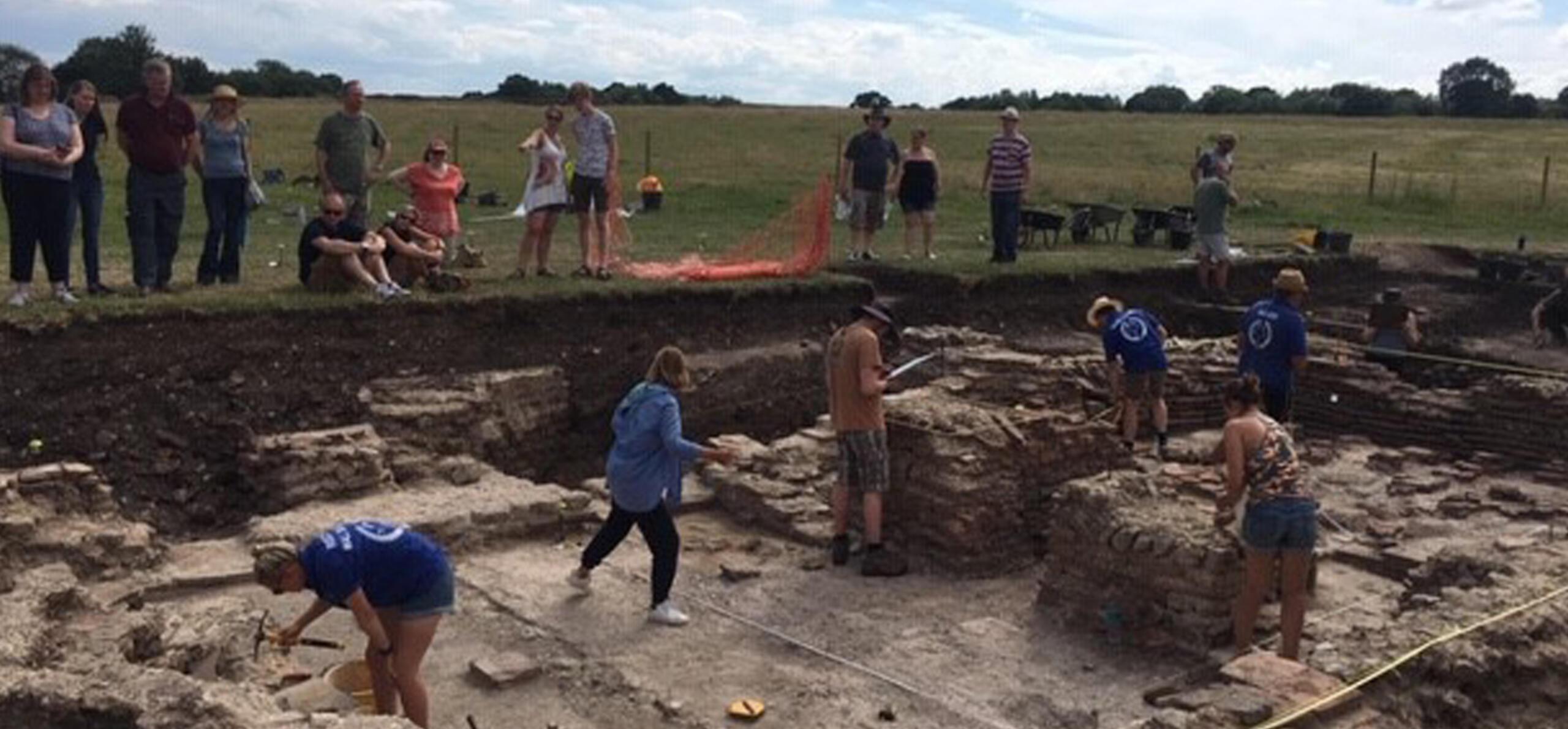In this blog, Reading Museum's collections assistant Sam Tabner reflects on her experience of working on many different archaeological digs and what it's like to be an archaeologist. Is it all non-stop ‘Indiana Jones’ style swashbuckling adventures? Or is it more of a precise science of discovery, analysis and interpretation?
Introduction
Hi, my name's Sam, and I'm the collections assistant at Reading Museum. I support the Collections Management Curator with the care, management and documentation of the objects in the museum collections - and the archaeology collections in particular. I also help with the interpretation and display of the collections for visitors to browse and enjoy.
My background is in archaeology. I've been part of various archaeological excavations and investigations. This includes post-excavation work on the Greek island of Crete, where I helped to identify and catalogue finds from a Late Minoan Peak Sanctuary site, and eleven seasons of excavations on a Mesolithic (Middle Stone Age) site on Yateley Common, Hampshire. There, I was part of an excavation team helping to unearth evidence of human occupation and land-use during the Mesolithic period.
Every summer from 1997 to 2014, students, professional archaeologists and other specialists have pitched up their tents on a farmer’s field in the middle of the countryside in Silchester, Hampshire, in excited anticipation of another season of excavations of Insula IX in the Roman town of Calleva Atrebartum.
Whilst studying archaeology at the University of Reading, I participated in the Silchester field school, where I became part of the University’s ‘Silchester Town Life Project’ research team. In this blog, I’ll talk through what day-to-day life looks like for a trainee archaeologist at a large-scale dig site such as this.
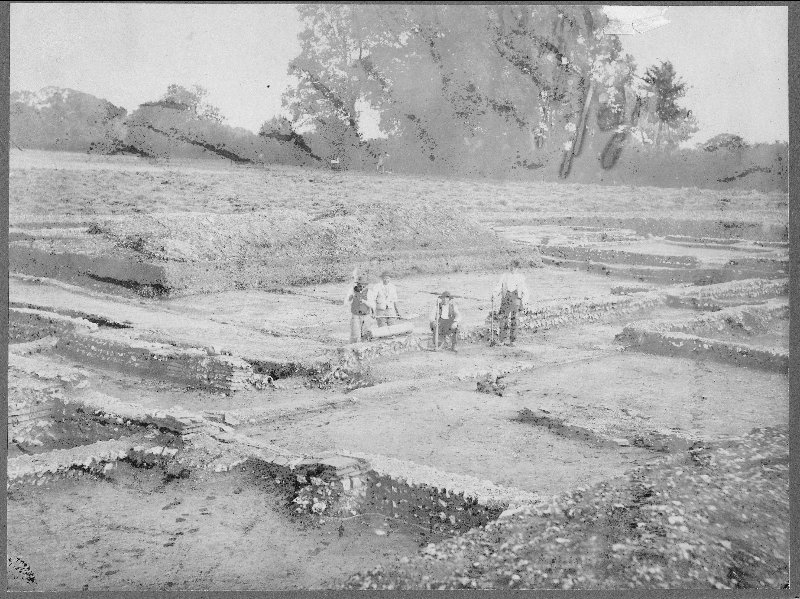
Archaeologists at the end of the 19th century at the Silchester site (REDMG : 1928.244.1774).
The day begins
The day on the site begins at around 7am, as you emerge-bleary eyed from your tent. But all is well: a hearty breakfast is provided by the chefs, who do an amazing job of creating yummy food for over 200 or so diggers from their tiny portacabin in the middle of a field.
Next, you'll receive a quick briefing from the site director, assigning your duties for the day. These can range from exciting but intense training sessions led by professional archaeologists on excavating and recording Roman architecture, to very unglamorous jobs of cleaning the site’s portaloos!
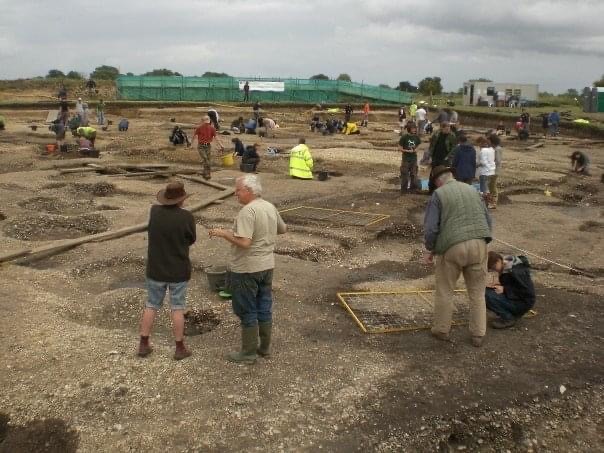
University of Reading's 2008 excavations of Insula IX at Silchester, Hampshire (author's own original photograph).
Each day, trainees carry out various tasks to learn about all the different elements that make up an archaeological dig like this. The many tasks that you're encouraged to participate in and learn about include: environmental flot sorting and sampling, archaeological excavation and recording techniques, geophysical surveying (of the surrounding landscape), and post-excavation finds cleaning, marking and cataloguing.
My favourite task was the hands-on excavation work. This is where you get to dig the ground to unearth amazing artefacts such as Roman brooches and rings or uncover long lost buildings and roads, some of which have not been seen or touched in over 2,000 years! It’s an amazing and proud moment when you dig up something deemed rare or spectacular by professional archaeologists, especially if it then becomes the ‘find of the day’.

A filigree gold finger ring set with a pyrope garnet, from Silchester, excavated by the Society of Antiquaries in 1894 (REDMG : 1995.2.1).
As well as the rare and spectacular finds, there are plenty of animal bones, broken pottery sherds, and ceramic building material (or CBM for short) to dig up too. But even these more usual finds help archaeologists and other specialists build up a complete picture of what life may have been like in this important Roman town.
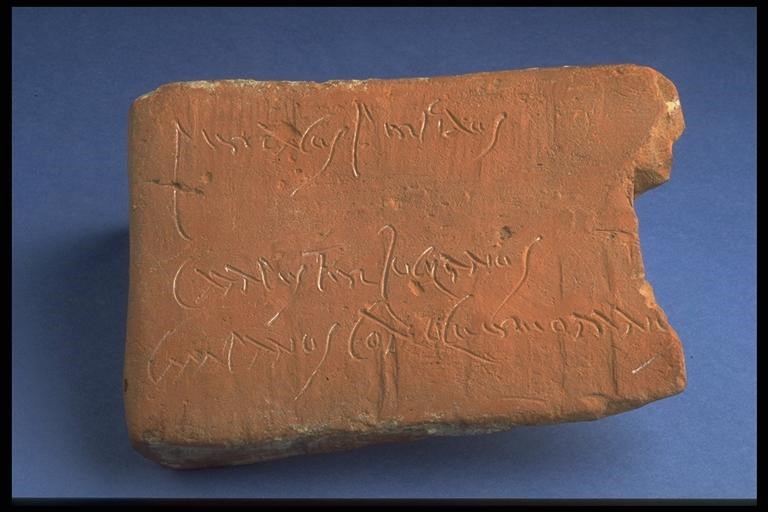
Graffito in cursive script on a box flue tile which ends with words from Virgil's Aeneid; thought to be a writing lesson, found at Silchester in 1850 (REDMG : 1995.1.26).
Excavation can be physically demanding and dirty work, but it can be exciting and great fun too! It requires the application of specialist taught skills, such as precise excavation techniques, accurate recording, and observation and analysis. These skills and techniques are essential for archaeologists, so that the artefacts they discover are carefully excavated, handled, and finally recorded, telling the most precise story possible of the site or its occupants.
After a long hard day’s work, the site team gather to relax and talk about the digging and their finds, before having dinner and a few drinks (and maybe playing a few games to unwind such as ‘killer frisbee’ in the amphitheatre).
Finally, it’s time for a quiet walk along the Roman town walls and watch the beautiful sunset before collapsing back into your tent to get some much-needed sleep before another day of excavation and discovery.
Current excavations at Silchester
The site at Silchester has been excavated intensively by various people for over 150 years. One of Reading Museum’s renowned collections is the Silchester Collection. Most of the objects come from excavations carried by the Reverend Joyce between 1864 and 1878, where he discovered the Silchester Eagle, and by the Society of Antiquaries of London who worked on the site from 1890 to 1909. Finds from later excavations by Mrs Molly Cotton, George Boon and Sir Ian Richmond have also been deposited in the Museum. Many of the objects from these excavations are on display in the Silchester Gallery.
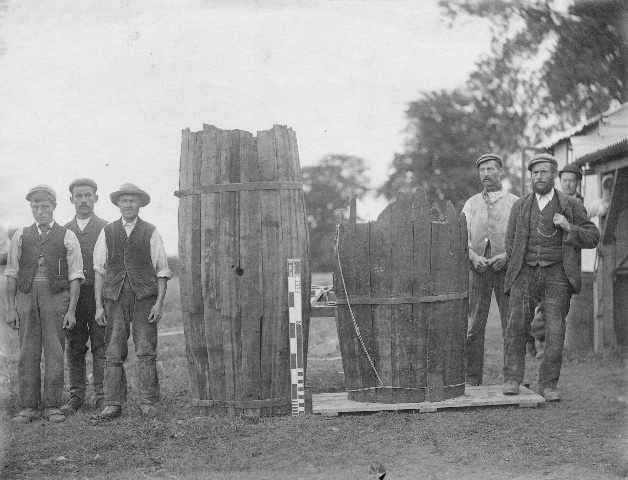
Group of excavators with two wooden barrels, Silchester. Photograph by F. Mason Good - 1897 (REDMG : 2002.34.108).
Even after 150 years' of investigations and excavations, there is still so much more to discover about the site of Calleva Atrebartum and its occupants. Current ongoing archaeological investigations run by the University of Reading, which are focusing on the Silchester bath house, are continuing to add to the understanding of this fascinating and important Roman town.
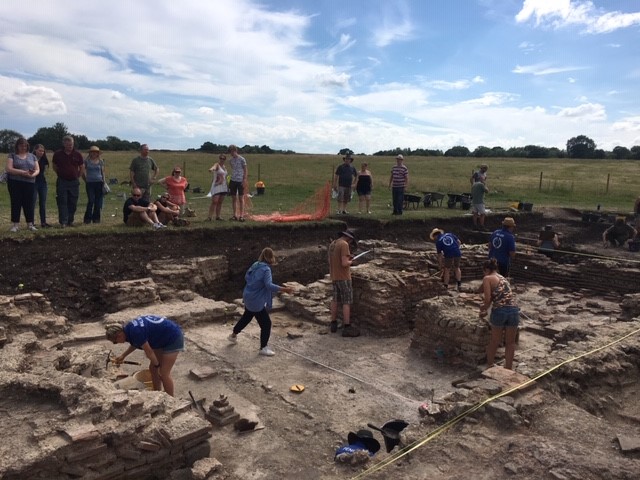
University of Reading Silchester Bath house excavations, 2019 (author's own original photograph).
This blog was created as part of our celebrations for the 2020 Festival of Archaeology! Across our website, discover many other archaeology-themed resources, including a brand new online exhibition about Roman Silchester, an online archaeology toolkit, and many arts and crafts ideas to make at home.
Discover more history from Roman Silchester on the Reading Museum blog, with topics including Silchester pottery, the Silchester eagle, and the Silchester Ogham stone.
